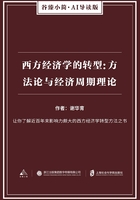That Morse was destined to be a painter seemed certain, and when, soon after graduating from Yale, he made the acquaintance of Washington Allston, an American artist of high standing, any doubts that may have existed in his mind as to his vocation were set at rest.Allston was then living in Boston, but was planning to return to England, where his name was well known, and it was arranged that young Morse should accompany him as his pupil.So in 1811 Morse went to England with Allston and returned to America four years later an accredited portrait painter, having studied not only under Allston but under the famous master, Benjamin West, and having met on intimate terms some of the great Englishmen of the time.He opened a studio in Boston, but as sitters were few, he made a trip through New England, taking commissions for portraits, and also visited Charleston, South Carolina, where some of his paintings may be seen today.
At Concord, New Hampshire, Morse met Miss Lucretia Walker, a beautiful and cultivated young woman, and they were married in 1818.Morse then settled in New York.His reputation as a painter increased steadily, though he gained little money, and in 1825 he was in Washington painting a portrait of the Marquis La Fayette, for the city of New York, when he heard from his father the bitter news of his wife's death in New Haven, then a journey of seven days from Washington.Leaving the portrait of La Fayette unfinished, the heartbroken artist made his way home.
Two years afterwards Morse was again obsessed with the marvels of electricity, as he had been in college.The occasion this time was a series of lectures on that subject given by James Freeman Dana before the New York Athenaeum in the chapel of Columbia College.Morse attended these lectures and formed with Dana an intimate acquaintance.Dana was in the habit of going to Morse's studio, where the two men would talk earnestly for long hours.
But Morse was still devoted to his art; besides, he had himself and three children to support, and painting was his only source of income.
Back to Europe went Morse in 1829 to pursue his profession and perfect himself in it by three years' further study.Then came the crisis.Homeward bound on the ship Sully in the autumn of 1832, Morse fell into conversation with some scientific men who were on board.One of the passengers asked this question: "Is the velocity of electricity reduced by the length of its conducting wire?" To which his neighbor replied that electricity passes instantly over any known length of wire and referred to Franklin's experiments with several miles of wire, in which no appreciable time elapsed between a touch at one end and a spark at the other.
Here was a fact already well known.Morse must have known it himself.But the tremendous significance of that fact had never before occurred to him nor, so far as he knew, to any man.Arecording telegraph! Why not? Intelligence delivered at one end of a wire instantly recorded at the other end, no matter how long the wire! It might reach across the continent or even round the earth.The idea set his mind on fire.
Home again in November, 1832, Morse found himself on the horns of a dilemma.To give up his profession meant that he would have no income; on the other hand, how could he continue wholeheartedly painting pictures while consumed with the idea of the telegraph?
The idea would not down; yet he must live; and there were his three motherless children in New Haven.He would have to go on painting as well as he could and develop his telegraph in what time he could spare.His brothers, Richard and Sidney, were both living in New York and they did what they could for him, giving him a room in a building they had erected at Nassau and Beekman Streets.Morse's lot at this time was made all the harder by hopes raised and dashed to earth again.Congress had voted money for mural paintings for the rotunda of the Capitol.The artists were to be selected by a committee of which John Quincy Adams was chairman.Morse expected a commission for a part of the work, for his standing at that time was second to that of no American artist, save Allston, and Allston he knew had declined to paint any of the pictures and had spoken in his favor.Adams, however, as chairman of the committee was of the opinion that the pictures should be done by foreign artists, there being no Americans available, he thought, of sufficiently high standing to execute the work with fitting distinction.This opinion, publicly expressed, infuriated James Fenimore Cooper, Morse's friend, and Cooper wrote an attack on Adams in the New York Evening Post, but without signing it.Supposing Morse to be the author of this article, Adams summarily struck his name from the list of artists who were to be employed.
How very poor Morse was about this time is indicated by a story afterwards told by General Strother of Virginia, who was one of his pupils:
I engaged to become Morse's pupil and subsequently went to New York and found him in a room in University Place.He had three or four other pupils and I soon found that our professor had very little patronage.
I paid my fifty dollars for one-quarter's instruction.Morse was a faithful teacher and took as much interest in our progress as--more indeed than--we did ourselves.But he was very poor.Iremember that, when my second quarter's pay was due, my remittance did not come as expected, and one day the professor came in and said, courteously: "Well Strother, my boy, how are we off for money?""Why professor," I answered, "I am sorry to say that I have been disappointed, but I expect a remittance next week.""Next week," he repeated sadly, "I shall be dead by that time.""Dead, sir?"
"Yes, dead by starvation."
I was distressed and astonished.I said hurriedly:
"Would ten dollars be of any service?"
"Ten dollars would save my life.That is all it would do."I paid the money, all that I had, and we dined together.It was a modest meal, but good, and after he had finished, he said:















